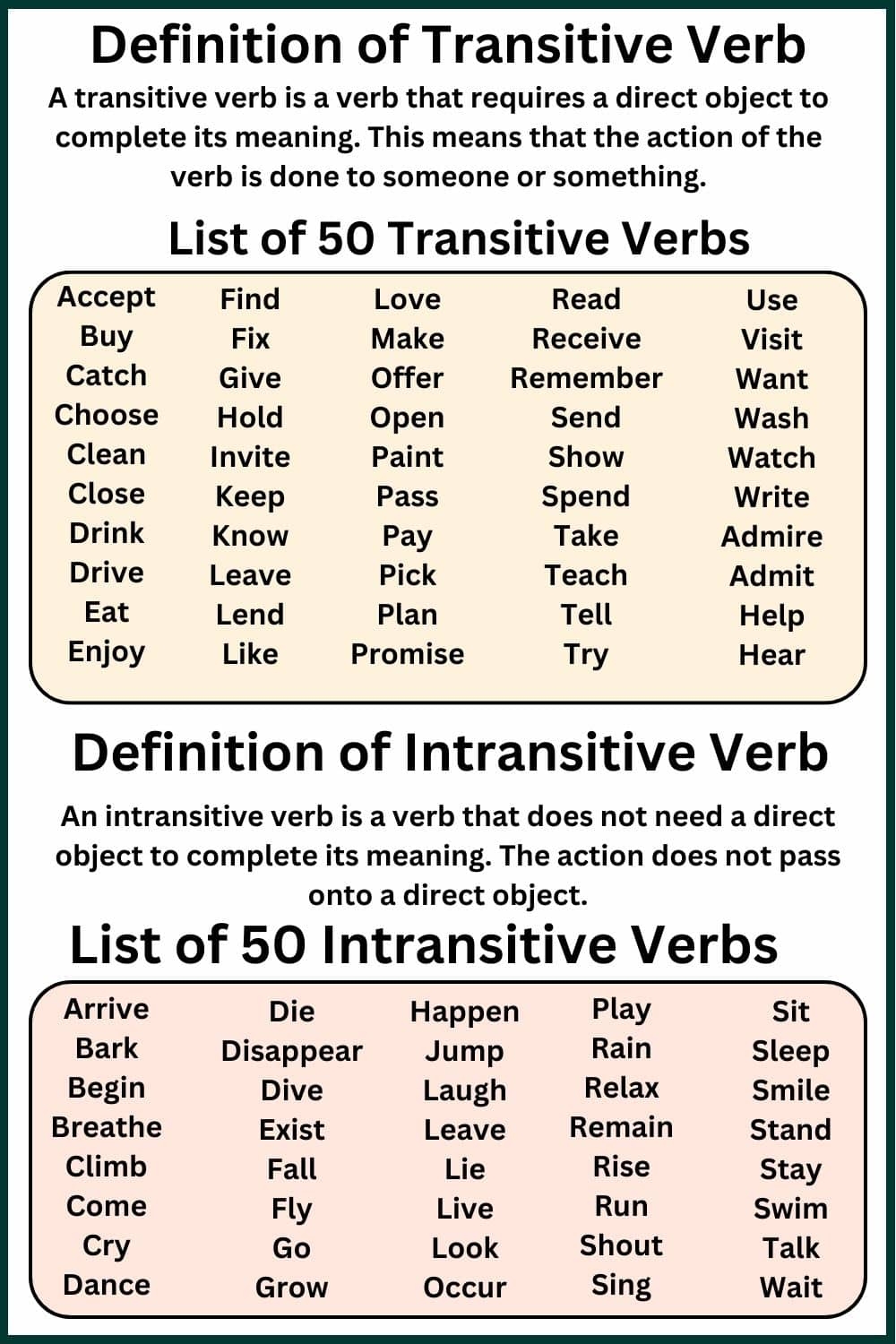Verbs are essential components of a sentence as they express action or state of being. Understanding the difference between transitive and intransitive verbs is crucial for constructing grammatically correct sentences.
Transitive and intransitive verbs differ in terms of the objects they require in a sentence. Transitive verbs require a direct object to complete their meaning, while intransitive verbs do not require an object.
Transitive and Intransitive Verbs
Transitive verbs are action verbs that require a direct object to complete their meaning. For example, in the sentence “She ate an apple,” the verb “ate” is transitive because it requires the direct object “an apple” to make sense.
Intransitive verbs, on the other hand, do not require a direct object to complete their meaning. These verbs express an action that does not transfer to an object. For example, in the sentence “He sleeps peacefully,” the verb “sleeps” is intransitive as it does not require an object.
Some verbs can function as both transitive and intransitive, depending on how they are used in a sentence. For example, the verb “run” can be transitive when used with a direct object (e.g., “She runs a marathon”) or intransitive when used without a direct object (e.g., “He runs every morning”).
It is important to pay attention to the context of the sentence to determine whether a verb is transitive or intransitive. Understanding the difference between these two types of verbs can help improve your writing and communication skills.
Using transitive and intransitive verbs correctly can impact the clarity and coherence of your sentences. By knowing when to use a direct object with a transitive verb and when to omit it with an intransitive verb, you can ensure that your writing is grammatically correct and effectively conveys your message.
In conclusion, transitive and intransitive verbs play a crucial role in sentence structure and meaning. By recognizing the difference between these two types of verbs and using them appropriately, you can enhance the quality of your writing and communication.
